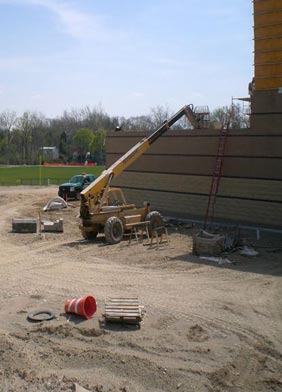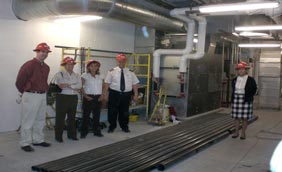When Ray Kroc first started selling McDonald’s hamburgs in Chicago, he was impressed by the dedication of Salvation Army members ringing bells on the Windy City’s frozen street to raise money for needy families. He couldn’t know his little business would turn into an empire, but generous from the get-go, Ray Kroc began delivering free coffee and sandwiches to the bell ringers.
Fast forward to 2004. Ray Kroc’s widow leaves the largest gift ever made to any nonprofit when she gives $1.7 billion to the Salvation Army. But not a penny could go to existing programs. Ray and Joan Kroc’s legacy was to build 30 first-class, top-quality family centers around the country in underserved communities. With the Salvation Army’s long history of caring for the neediest, Joan Kroc chose them as the best organization to run the centers.
The Grand Rapids, Michigan, Salvation Army made a successful bid to build a center.After three years putting this dream together, on October 21, 2010, the 99,000 square-feet, building on 20 acres of land at 2500 South Division near Alger, the Ray and Joan Kroc Center will open its doors. With a mission of transforming lives through arts, music, education, wellness, recreation, and worship, the Kroc Center will happen thanks to streams of generosity.
Yes, the Kroc estate donated $47 million to Grand Rapids. But the necessary $15 million in matching funds came from a giving Grand Rapids community that understood what this high-end learning, playing, and worshiping center will mean to the thousands of families who live within a mile of it. Every thing inside – from the swimming pool/lazy river/slide to the climbing wall to the 300-seat auditorium to the fitness equipment and computer center – is state-of-the art.
Peter Wege and the Wege Foundation have been involved from the beginning as a major donor and as a green-building influence. Indeed, Wege’s environmental leadership contributed to the Salvation Army’s daring decision to install a geo-thermal heating/cooling system rather than the standard fossil-fuel burning systems. One direct result of that choice is t

This geo-thermal system helped the Salvation Army’s Grand Rapids Kroc Center earn enough extra LEED points from the U.S. Green Building Council to qualify for a silver and perhaps a gold medallion.
hat G.R.’s Kroc Center has moved up from earning the United States Green Building Council’s LEED certification to the silver level and maybe even the gold award from environmental construction.
(Above photo – James Mueller, development office/Salvation Army, Terri McCarthy, Wege Foundation, S.A. volunteer Julie Lovell, head of the new Kroc Center Major Roger Ross, and Ellen Satterlee, of the Wege Foundation, stand in front of the inside equipment running the geo-thermal heating-cooling system for the Kroc Family Center at 2500 South Division. Economicologist Peter Wege helped influence the Salvation Army to install the environmentally friendly system that draws on warmed water from the earth instead of burning fossil fuels.

